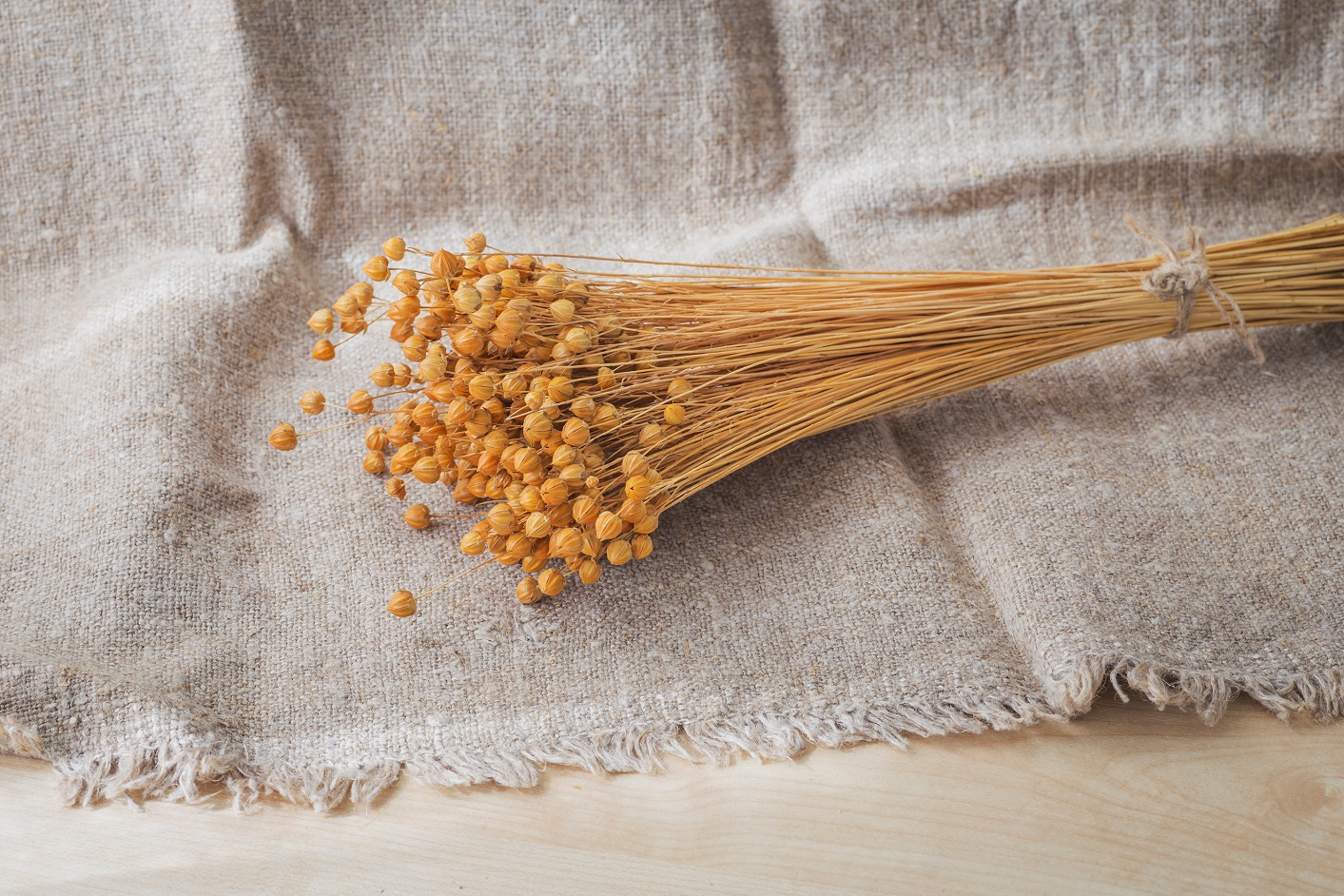
Whether used to craft our throws, bedspreads or cushions, it’s safe to say that linen is a pretty incredible material to work with. That’s why we aren’t shy when it comes to shouting about the many amazing benefits this wondrous material makes possible.
There are so many reasons to love linen, from its moisture resistance and breathability to its hypoallergenic, sleep-promoting nature. And to top it all off, it’s super sustainable too!
With incorporating sustainable materials into your home one of the biggest and hottest trends of 2022, you’ll certainly be in vogue with a little linen in your life. In this blog post, we take a closer look at the sustainability of linen and how its eco credentials compare to other fibres.
It all starts with the flax plant
Linen is made from fibres of a flax plant, and the material’s very sustainable story starts there. Flax is actually one of the most sustainable plants in the world. Its cultivation harnesses a long list of positives for the planet. We’ll let eco resource Better Meets Reality explain more:
“Flax is a natural and renewable plant. Flax may have a reasonable yield in some instances on a per acre or per hectare basis. Most of the flax plants can be reasonably well used. Flax may be able to grow with little to no irrigation in some climates and regions. Flax may have a similar carbon footprint to hemp, and a lower carbon footprint than jute. Flax may use little to no pesticides and synthetic fertilizers in some instances.”
With a particularly short harvest time – flax takes just 100 days to mature compared to cotton’s 150 to 180-day gestation – and its ability to grow in cool, humid climates even with minimal water, flax is extremely sustainable and completely renewable.
The entire plant is also used in some way or another, with its fibres extracted to create linen, its seeds used in food products, and its oil able to treat furniture.
Linen’s durability helps the planet too
Flax’s sustainability continues even when it is lovingly transformed into the linen items found in our homes and wardrobes. Linen is very durable and lasts longer than many of the other natural and synthetic fibres used to create clothing, furniture and homewares.
End-of-life linen doesn’t clog up landfill
Even when your linen items do reach the end of their lives, thanks to its sustainable nature, it doesn’t clog up landfill sites like other textiles and apparel.
Unlike other fibres, it’s fully compostable, with its natural goodness able to be returned to the soil if it has remained free from chemicals, dyes and synthetics. Linen is also particularly versatile; the fabric that makes up your clothes and home accessories can be repurposed to enjoy a second life as something new.
Linen care is very earth-friendly indeed
Linen is strong, durable and able to be used with very little upkeep. Choosing linen items actively reduces your laundry load. Once washed, it should be air dried away from direct heat to keep its iconic texture, which means there’s no need to use your tumble dryer or turn your central heating up.
With the right care, linen also becomes softer over time, so you’ll have many years enjoying its super sustainable benefits as well as its beautiful look and feel.
Shop our linen products today to realise this fibre’s eco-friendly advantages for yourself.

Image: Auhustsinovich / Shutterstock.com
